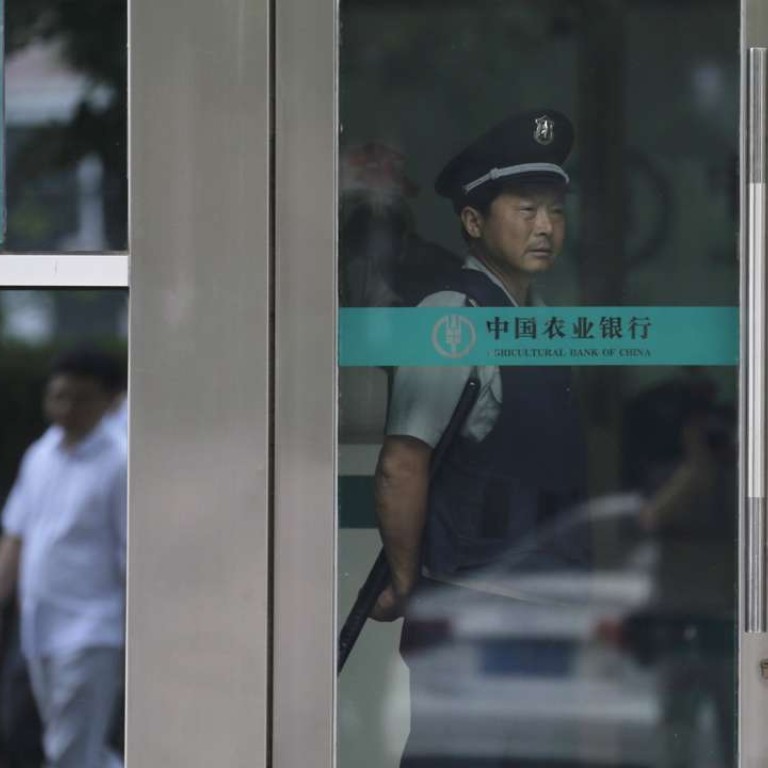
Why you should avoid Chinese bank stocks
Bad loan ratios continued to climb in the first quarter
Investors should stay clear of mainland China bank shares, analysts advise, as their bad loans and credit losses will continue to surge and government stimulus cannot solve their problems.
The latest financial results suggested some major banks’ bad loan ratios continued to climb in the first quarter of the year and asset quality pressure remained high.
“Annualised net NPL (non-performing loan) formation of 1.36 per cent [for mainland China banks] in a quarter with typical seasonally slow NPL formation indicates ongoing credit quality pressure,” Morgan Stanley analysts said in a recent report.
Industrial and Commercial Bank of China (ICBC), the mainland’s largest commercial lender by assets, saw its NPL ratio jump by 16 basis points from the previous quarter to 1.66 per cent, Morgan Stanley’s Richard Xu said, while “provisioning pressure persisted”.
NPLs will worsen with the slowing economy, but the government does not have a comprehensive plan
ICBC’s annualised NPL formation rose to 136 basis points in the first quarter, significantly higher than the 77 basis points in the last quarter of 2015, he added.
Among other major commercial lenders, Agricultural Bank of China stood out with the highest NPL ratio at 2.39 per cent, flat with the fourth quarter of last year. China Merchants Bank and China Minsheng Banking Corp also saw asset quality under pressure, with China Merchants’ NPL ratio increasing to 1.81 per cent and Minsheng’s to 1.62 per cent.
And the bad loan issue may get worse for the entire sector , according to Standard & Poor’s Global Ratings.
Although most banks’ NPL ratios ranged from 1.43 per cent to 1.66 per cent at the end of March, which still compared well with the industry average of 1.67 per cent at the end of last year, their seemingly adequate asset quality metrics might be “unsustainable”, analysts from S&P’s Global Ratings said.
“We attribute the resilience in this quarter mainly to the lending spree during the period, which provided a temporary respite from the effects of China’s economic slowdown and mitigated the refinancing pressure for distressed borrowers,” they said. “As the government’s ‘supply-side’ reforms proceed, we expect banks’ NPLs and credit losses to surge.”
“Supply-side reform” was a new slogan from President Xi Jinping in November when he emphasised the importance of addressing supply-side issues in the mainland economy. Although the government’s definition of the phrase is still vague, market observers say the policies include cutting overcapacity in crowded sectors, such as steel and coal, and could lead to massive restructuring of state-owned enterprises.
Some analysts are more pessimistic about the estimated size of mainland China’s bad loans and the banking sector’s prospects.
“Avoid banks and cyclical sectors,” Francis Cheung, CLSA’s head of China and Hong Kong strategy, said on Friday. He recommended investors avoid banking stocks like China Merchants Bank and China Minsheng Banking Corp, as listed bank shares had not “adequately discounted NPL risk”.
Cheung estimated the NPL ratio for mainland banks was actually around 15 per cent to 19 per cent, much more than the government number.
“The official NPL ratio is much lower at 1.6 per cent, as it reflects the implicit guarantees of SOEs (state-owned enterprises) and continuous rollover of debt,” he said.
Based on his 15 per cent to 19 per cent NPL ratio estimate, banks would need to raise 6.8 trillion yuan to 10.6 trillion yuan to cover all the losses, assuming 100 per cent of provisioning. And that is equivalent to 10 per cent to 15 per cent of the mainland’s gross domestic product.
“NPLs will worsen with the slowing economy, but the government does not have a comprehensive plan,” Cheung said.
The central government has been pursuing further stimulus to revive the property markets, address mounting bad loans and improve labour market conditions.
But stimulus was becoming less effective, requiring four units of credit for each unit of growth, he said.
CLSA was turning “cautious” on the equity markets as the stimulus effect faded, with weak PMI data a warning signal, Cheung added.

